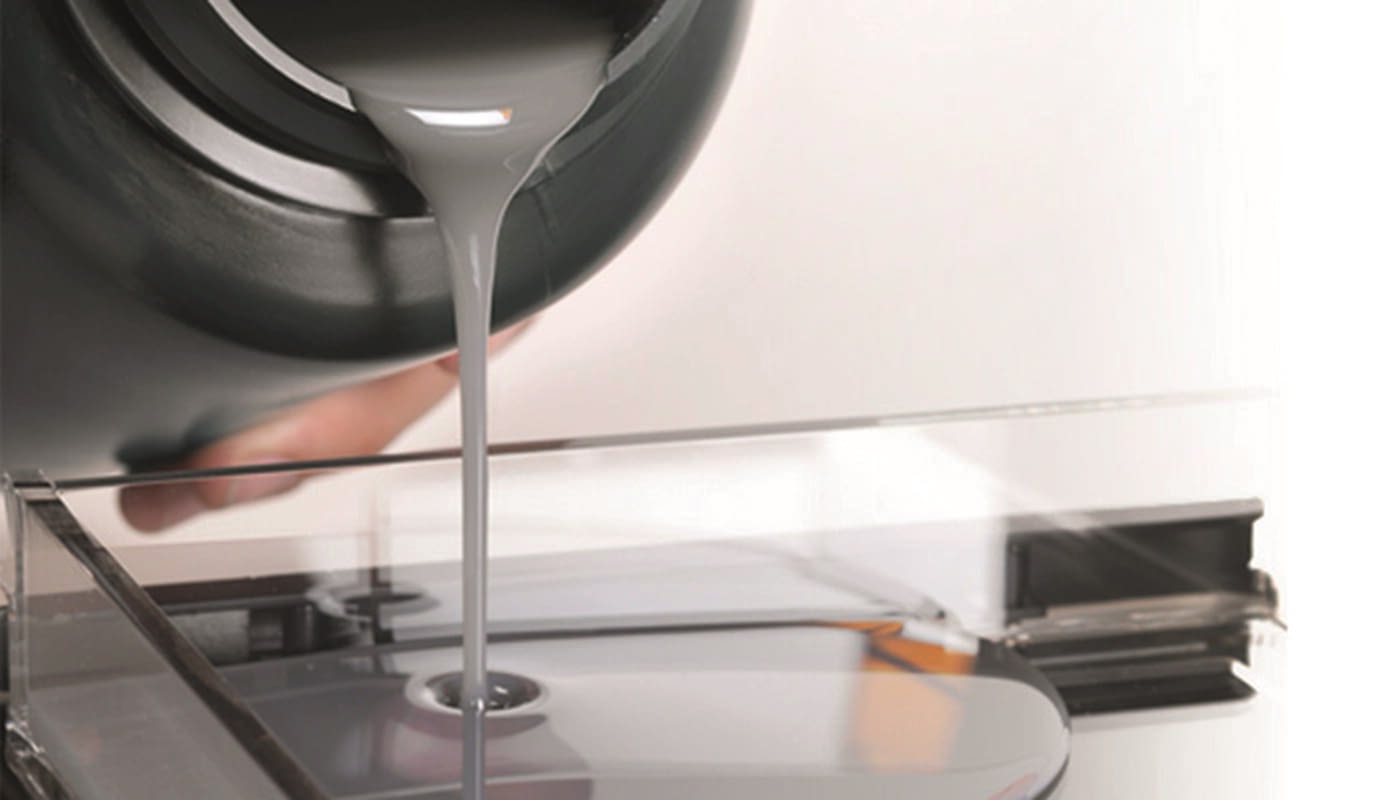STEREOLITHOGRAPHY
This process, technically known in the 3D printing world as SLA, is recommended for those cases where we require parts with an excellent appearance, impeccable surface quality and for immediate manufacture.
Stereolithography 3D printing is a laser technology that uses basic materials and liquid resins that are sensitive to UV light.
Stereolithography 3D printing is a laser technology that uses basic materials and liquid resins that are sensitive to UV light.

The 3D model is built layer by layer, on a moving platform, respecting the digital 3D model supplied to the printer. The platform is immersed in the resin tray after each solidified layer while the laser works from the bottom up.
The result is the solidification of the liquid material as a consequence of exposure to the ultraviolet laser.
The process automatically creates support structures for the 3D model that are manually removed at the end of the process.
This technology is mainly used for the creation of visual prototypes for presentations and market testing for all industrial sectors, but it is also used for functional parts for limited testing, with fast delivery requirements.
The result of the SLA process is models with smooth surfaces and a high level of detail. Complex geometries and small-scale artistic models can be achieved. The stereolithography colour range is white, black, grey, transparent or blue.
We work with rigid, flexible, elastic, durable, biodegradable and high temperature resistant resins for this process.
Painting or polishing is possible in post-processing to achieve the desired effect on the part.
TECHNICAL SPECIFICATIONS:
145 x 145 x 185 mm
Layer height: 25 – 300 µm XY Resolution = 25 µm.
Materials: Technical and standard resins
145 x 145 x 185 mm
Layer height: 25 – 300 µm XY Resolution = 25 µm.
Materials: Technical and standard resins



